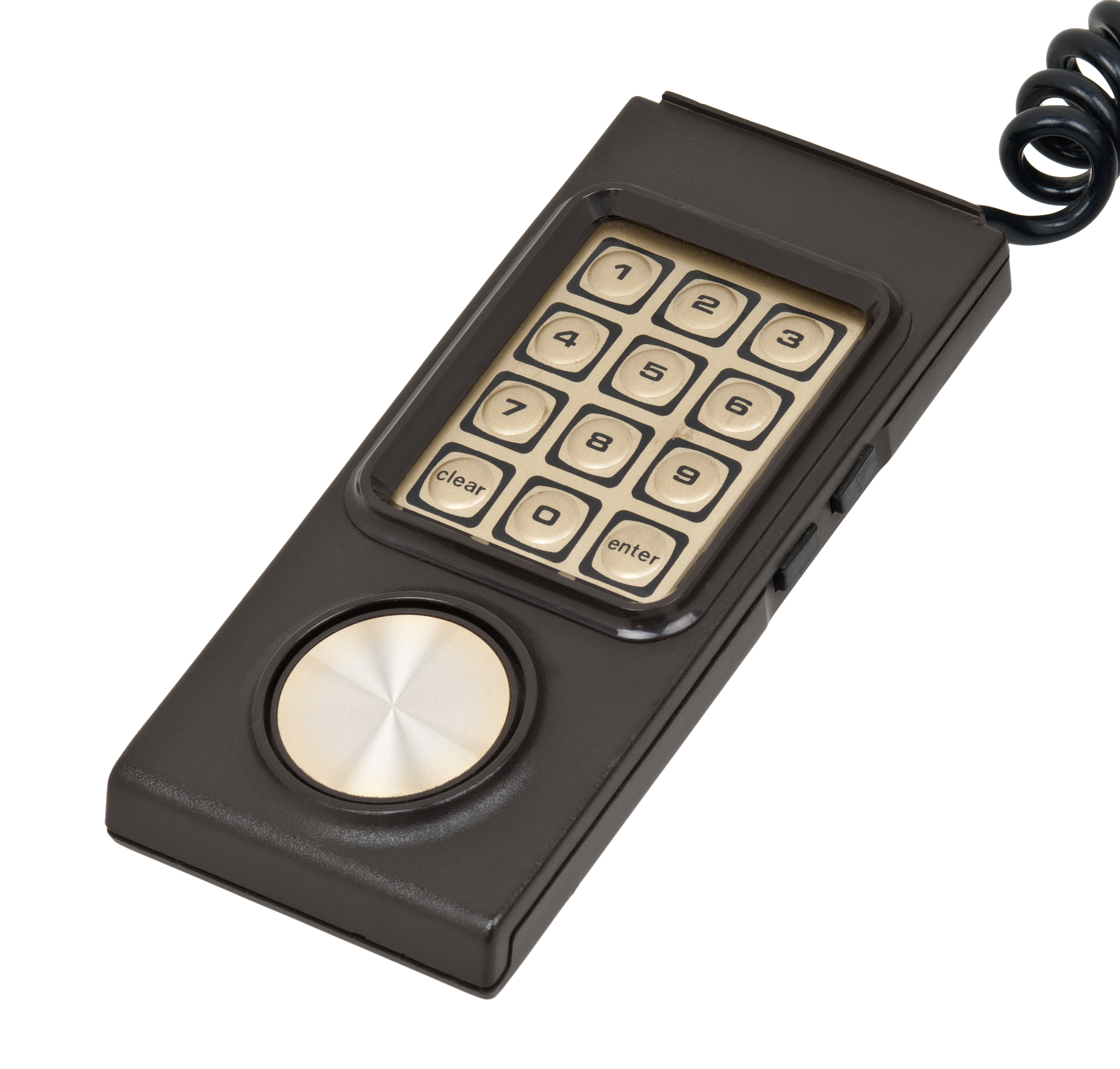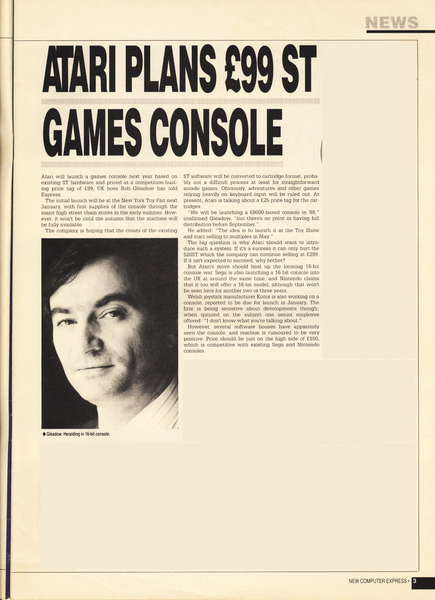Eddie-Griffin
Banned
While there are some decent 3D games on the Atari Jaguar, most of those were not trying to be over ambitious. The Jaguar was not able to compete in 3D without compromises due to it's complicated architecture with 3 processors, very similar to the Saturn except the Saturn had more memory to work with and had a chip that could off-load busywork and you can program for al the processors instead of having one of them "halt" another one until a cycle is finished, The Jaguars 3D capabilities due to these issues was clearly limited to games maybe 15-20% more powerful than the Sega 32X, and attempting to push the hardware beyond that with its lackluster tools which had poor documentation resulted in major sacrifices, horrible rendering, choppy graphics, horrible frame rates, and freezing when there's too much action on screen.
The Jaguar however, was designed to handle 2D graphics that wouldn't have been out of place in the arcades and that is what it was really good at consistently. Only the Sega Saturn was really competitive with the Jaguar in how it handled 2D gaming and at frame rates that its direct competitor could only dream of (2D games on 3DO are lucky to be 30fps). Some examples of 2D jaguar power.
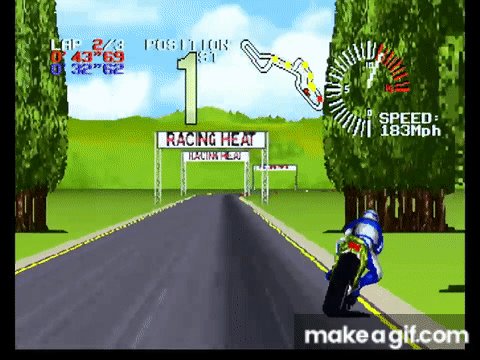
Super Burnout looks like it came right out of a Sega Arcade machine. One of the best examples of the Atari Jaguars rotation and scaling capabilities at a solid 60fps with attention to detail and vivid colors.
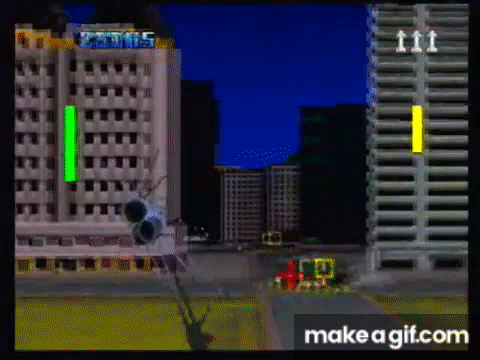
This game fooled many people, especially in screenshots, and I wouldn't be surprised at first glance it fooled people here but this is not a 3D game, but a 2D game with large towering scaling architecture and a wide playfield. Blue Lightening is another example of jaguar 2D scaling and rotational power.
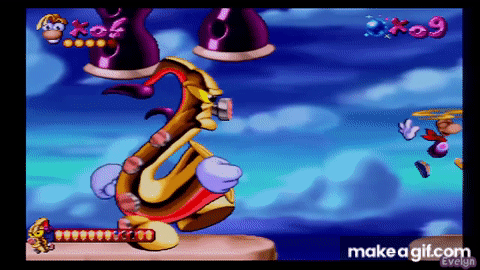
The best version of Rayman compared to other contemporary console and PC at the time. The Jaguar version had a higher color pallet, better image quality, faster and smoother animation, and improved detail. This shouldn't be surprising though since the game was originally made for the Jaguar. The only questionable issue with this version of the game is the sound, even Super Burnout above has some CD quality like sound but this seems like the brought over music from a PC without a soundcard. But other than that weakness it's the best and most playable version of the game.
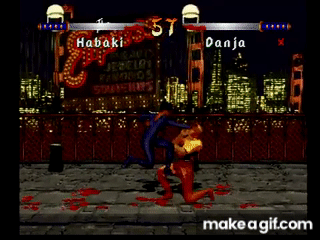
Kasumi Ninja is a game that may not be one of the best fighters out there, but graphically it's a sight to behold. Accurate reflections, and parallax not just in the fore ground and the fence, but three rows in the city background as well. Pretty snazzy.

A snowboarding game Val Skiing, not the full name but I can't remember the whole thing. Once again the Jaguar shows off it's scaling and sprite capabilities with this very fast Skiing game with vibrant graphics that doesn't slowdown the action at anytime. You even have a sense of depth when moving up or downhill and the sprites scale to match.

Power Drive Rally, one of the best looking overhead racers out there, a style that isn't hasn't been all too popular common since, outside a few gems here and there. it's not just that you have a smooth running game at a locked frame rate, but there are lighting and shadow effects in this game, in this case you can see the shadow effects in the gif. The detailed car sprites and levels are breathtaking and even outshines the Neo-Geo, a console made for this type of game. But the jaguar outdoes the Neo-Geo in this genre. It runs smooth, it's colorful, detailed, and fast.
The Jaguar made a mistake to focus so much on trying to be overly ambitious on 3D, not because it couldn't do it, but because the tools, the documentation, wasn't there, combine that with poorly implemented complicated architecture, it's going to be hard for you to get anything out of the system without compromise.. Once that became obvious early on the Jaguar should have focused on amazing 2D or hybrid experiences.
Like another console, Sega's Saturn, i believe the Jaguar was a great 2D machine and we never had a chance to see what it or the Saturn were capable of because of both company leaderships pushing so hard to match the competition in 3D, they forgot their own advantage. it's hard to convince customers to buy if you are the also-ran that's behind the leader, but if you show that you have something the competition doesn't, then you have a better playing field. The Jaguar and Saturn should have had a mix of next generation 2D games along with 3D games which would improve over time that are within the scope of the hardware.
Too bad most officially released jaguar games are 3D, or at least Doom/Wolf type of 2D imitating 3D. I'd like to have seen a Super Burnout 2 with more money invested in it, maybe that would have given us something like A.B.Cop on the jaguar.
The Jaguar however, was designed to handle 2D graphics that wouldn't have been out of place in the arcades and that is what it was really good at consistently. Only the Sega Saturn was really competitive with the Jaguar in how it handled 2D gaming and at frame rates that its direct competitor could only dream of (2D games on 3DO are lucky to be 30fps). Some examples of 2D jaguar power.

Super Burnout looks like it came right out of a Sega Arcade machine. One of the best examples of the Atari Jaguars rotation and scaling capabilities at a solid 60fps with attention to detail and vivid colors.

This game fooled many people, especially in screenshots, and I wouldn't be surprised at first glance it fooled people here but this is not a 3D game, but a 2D game with large towering scaling architecture and a wide playfield. Blue Lightening is another example of jaguar 2D scaling and rotational power.

The best version of Rayman compared to other contemporary console and PC at the time. The Jaguar version had a higher color pallet, better image quality, faster and smoother animation, and improved detail. This shouldn't be surprising though since the game was originally made for the Jaguar. The only questionable issue with this version of the game is the sound, even Super Burnout above has some CD quality like sound but this seems like the brought over music from a PC without a soundcard. But other than that weakness it's the best and most playable version of the game.

Kasumi Ninja is a game that may not be one of the best fighters out there, but graphically it's a sight to behold. Accurate reflections, and parallax not just in the fore ground and the fence, but three rows in the city background as well. Pretty snazzy.

A snowboarding game Val Skiing, not the full name but I can't remember the whole thing. Once again the Jaguar shows off it's scaling and sprite capabilities with this very fast Skiing game with vibrant graphics that doesn't slowdown the action at anytime. You even have a sense of depth when moving up or downhill and the sprites scale to match.

Power Drive Rally, one of the best looking overhead racers out there, a style that isn't hasn't been all too popular common since, outside a few gems here and there. it's not just that you have a smooth running game at a locked frame rate, but there are lighting and shadow effects in this game, in this case you can see the shadow effects in the gif. The detailed car sprites and levels are breathtaking and even outshines the Neo-Geo, a console made for this type of game. But the jaguar outdoes the Neo-Geo in this genre. It runs smooth, it's colorful, detailed, and fast.
The Jaguar made a mistake to focus so much on trying to be overly ambitious on 3D, not because it couldn't do it, but because the tools, the documentation, wasn't there, combine that with poorly implemented complicated architecture, it's going to be hard for you to get anything out of the system without compromise.. Once that became obvious early on the Jaguar should have focused on amazing 2D or hybrid experiences.
Like another console, Sega's Saturn, i believe the Jaguar was a great 2D machine and we never had a chance to see what it or the Saturn were capable of because of both company leaderships pushing so hard to match the competition in 3D, they forgot their own advantage. it's hard to convince customers to buy if you are the also-ran that's behind the leader, but if you show that you have something the competition doesn't, then you have a better playing field. The Jaguar and Saturn should have had a mix of next generation 2D games along with 3D games which would improve over time that are within the scope of the hardware.
Too bad most officially released jaguar games are 3D, or at least Doom/Wolf type of 2D imitating 3D. I'd like to have seen a Super Burnout 2 with more money invested in it, maybe that would have given us something like A.B.Cop on the jaguar.


